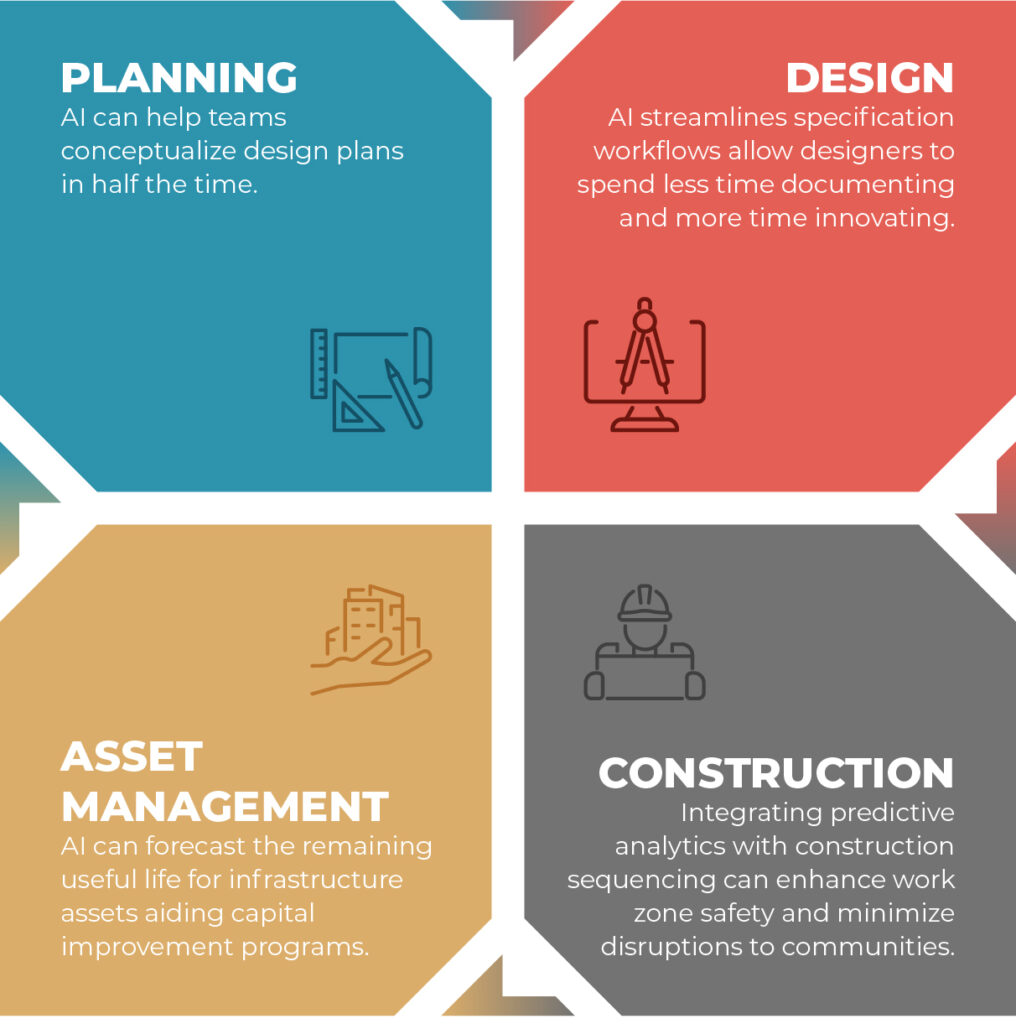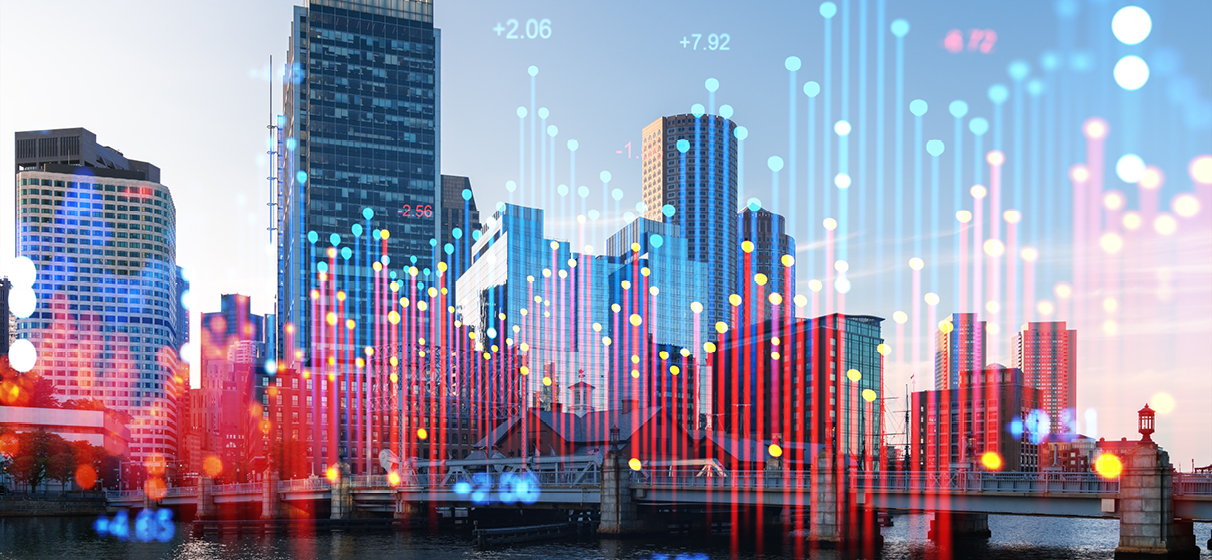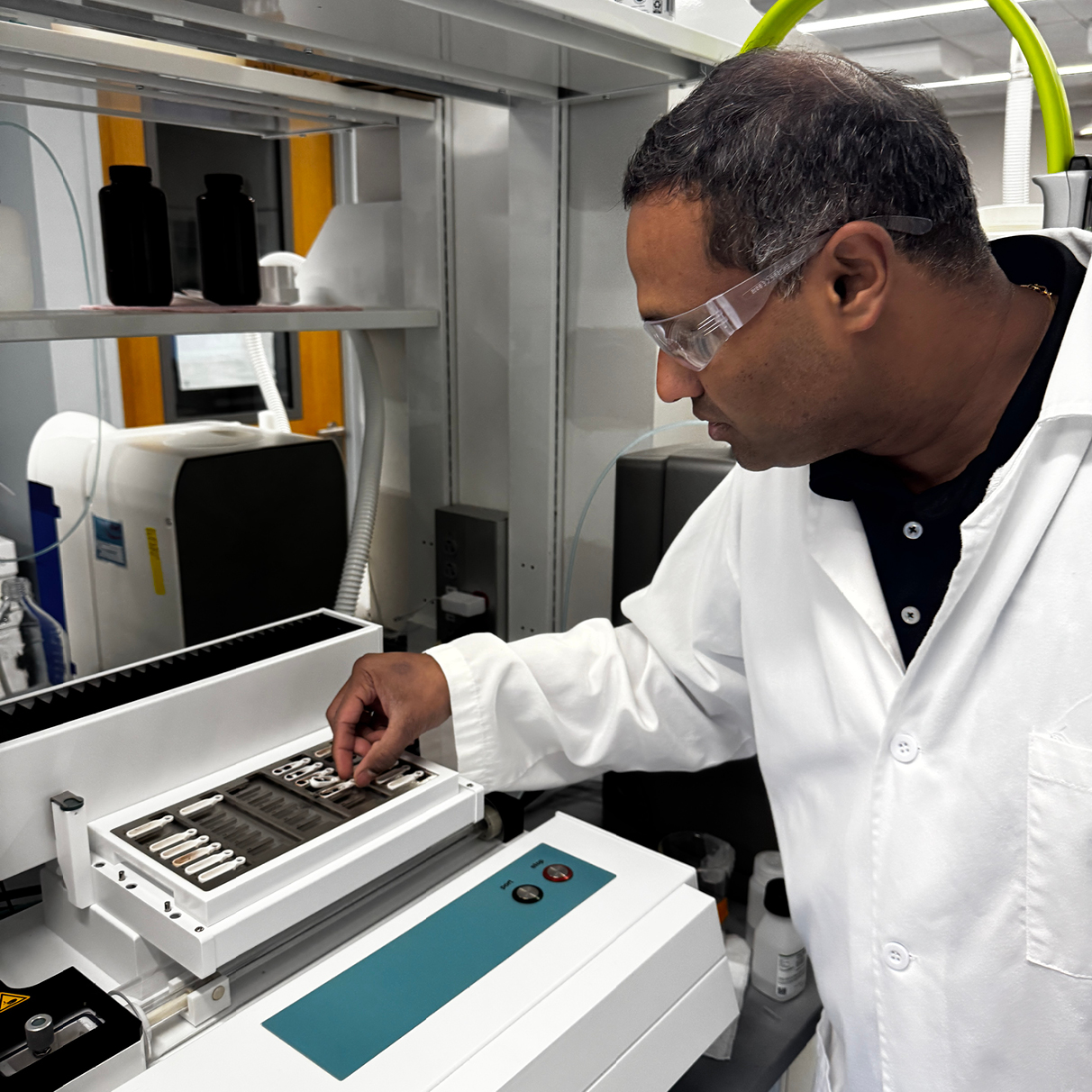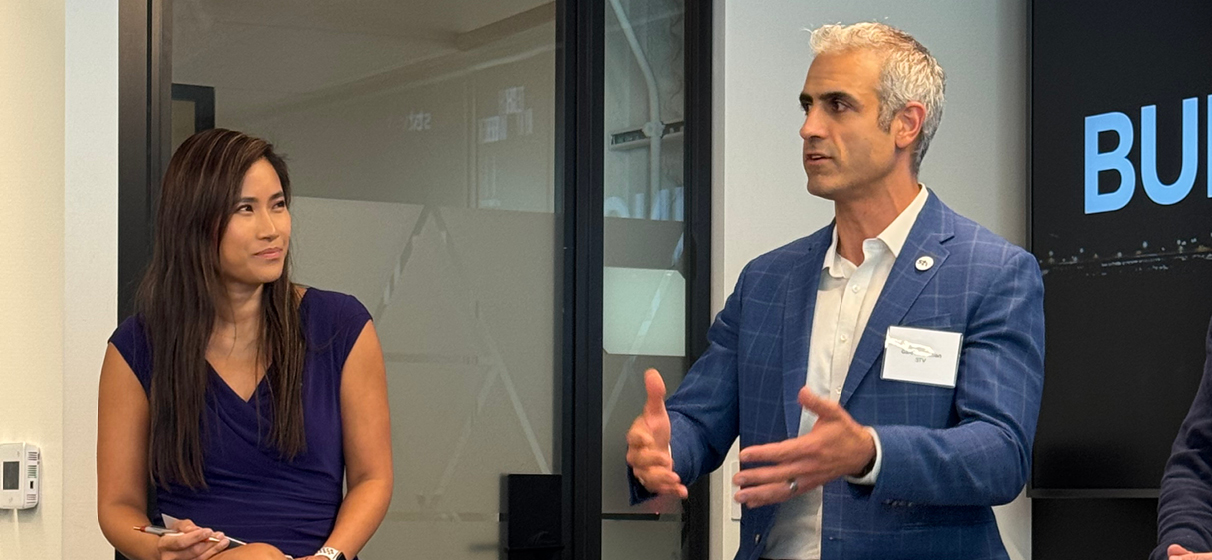Throughout the industry, we are witnessing a pivotal shift in how infrastructure projects are conceived, planned, and delivered. Artificial intelligence (AI) is not only reshaping the AEC industry – it’s redefining what is possible.
During the recent panel, “AI for People and Planet” at the AIA25 Conference on Architecture & Design, I was joined by other industry professionals to discuss how AI and associated digital tools are shifting not just how we work, but how we think about design, sustainability and long-term infrastructure performance
As public agencies and private clients pursue ambitious goals around these infrastructure programs, the pressure to make smarter decisions earlier in the design process has never been greater. AI and data-enabled tools are becoming indispensable in helping our clients meet those challenges.
Designing with Intelligence from Day One
Our industry has long understood that the earlier a decision is made in a project lifecycle, the more influence it has on cost, schedule and outcomes. With generative AI platforms, our teams are helping clients integrate real-time performance analysis into early-phase site planning, feasibility and massing studies. In a recent pilot, teams were able to finalize a concept design in just two weeks – half the time needed for a typical design cycle – while embedding sustainability and constructability insights from the outset.
Similarly, STV’s pilot streamlines specification workflows, saving time on manual spec writing, and improving compliance across disciplines. These tools allow designers to spend less time documenting and more time innovating.

Embedding Resilience Through Predictive Modeling
Beyond early-stage design, AI is helping us solve some of the industry’s most pressing long-term planning challenges. STV is piloting a climate adaptation planning tool to more effectively integrate resilience metrics directly into asset valuation and capital planning. Doing this enables clients to weigh long-term risk against environmental shocks alongside traditional budget and performance criteria.
In parallel, we are also piloting a capital portfolio tool that leverages AI to forecast for clients the remaining useful life of infrastructure assets and support risk-based prioritization of repair and replacement. These tools are guiding infrastructure owners toward smarter, more defensible investment strategies – particularly in environments where resources are constrained.
Smarter Construction and Safer Communities
We’re also leveraging AI to enhance how we deliver and operate infrastructure in the field. One of our current pilots is modeling traffic patterns around active construction zones, integrating predictive analytics with construction sequencing to enhance safety and minimize disruption to residents and businesses. Similarly, when supporting Vision Zero initiatives for clients, we are applying machine learning to identify high-risk corridors before incidents occur, giving agencies the foresight they need to make transformative improvements within the community.
Finally, this technology is helping us unify data across different construction software platforms, reducing time spent searching for information and enabling more strategic decision-making through AI-powered knowledge graphs.
Building a Foundation for the Future
As powerful as AI is, its effectiveness is only as strong as the data it draws from. Our industry is still grappling with fragmented systems and inconsistent data quality, which limits the full potential of digital transformation. STV’s team is committed to helping our clients build open, connected data environments that are essential to unlocking AI’s value.
Ultimately, AI is a strategic capability – one that requires investment, intention, and collaboration across disciplines. But if we get it right, we’re not just designing infrastructure; we’re designing intelligence into the built environment.








